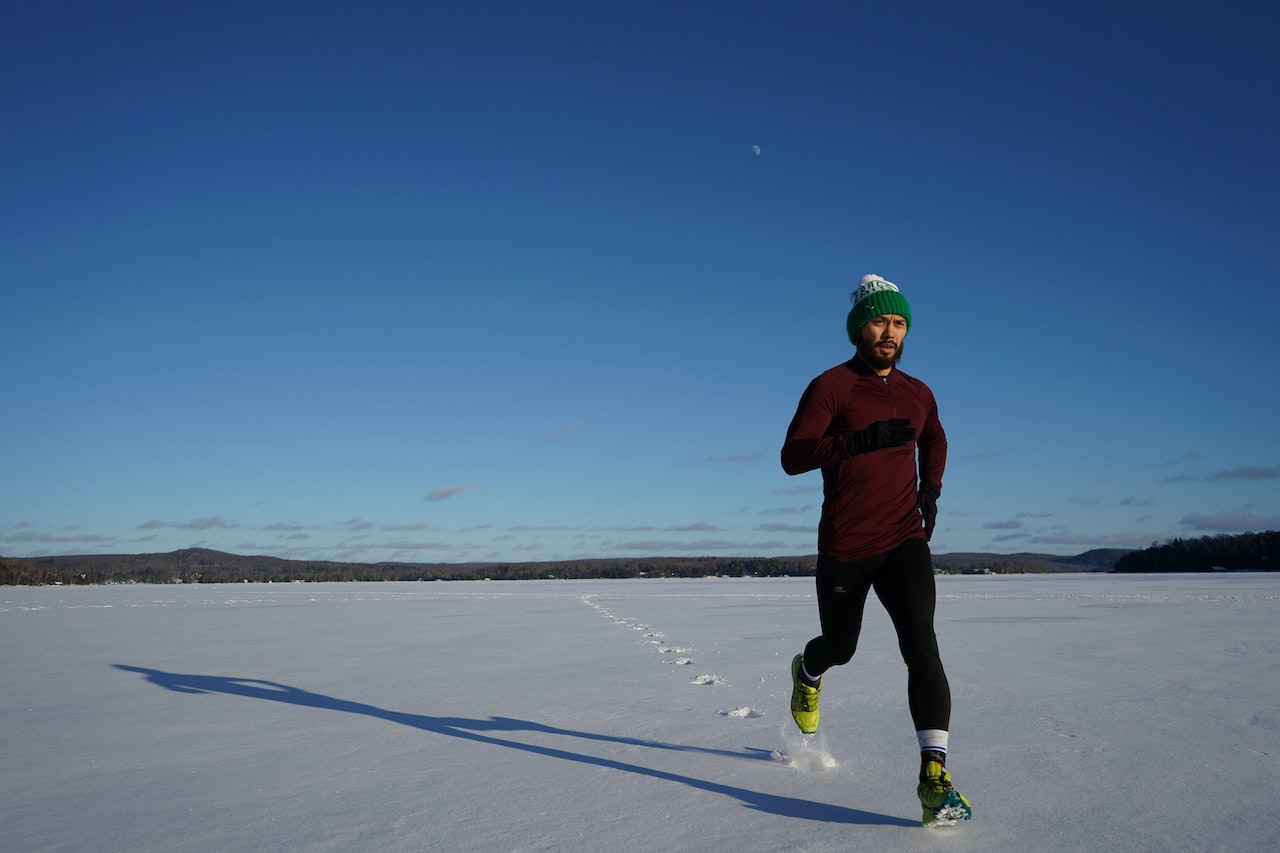Running an Ultra is a challenging and rewarding goal, but it also requires careful planning and preparation. One of the factors that can affect your training and performance is the weather. Depending on where you live and when you race, you may encounter different weather conditions that can make your training easier or harder. Here are some tips on how to adapt your Ultra training plan to different weather conditions.
Running in the Cold
Cold weather can make your muscles stiff and tight, increase your risk of injury, and lower your motivation. However, it can also help you burn more calories and improve your endurance. To run safely and comfortably in the cold, you must dress appropriately and warm up properly.
- Dress in layers of moisture-wicking clothing that you can easily remove or add as needed. Wear a hat, gloves, and socks to protect your extremities from frostbite. Avoid cotton and other fabrics that absorb sweat and make you feel colder.
- Warm up gradually before you run. Start with dynamic stretches and light jogging to increase blood flow and raise body temperature. Avoid static stretches that can strain your cold muscles.
- Run by effort, not by pace. Cold weather can slow you down, so don’t worry too much about your speed. Focus on how you feel and adjust your intensity accordingly. You can also use a heart rate monitor to guide your effort level.
- Stay hydrated. Even though you may not feel thirsty, you still lose fluids through sweating and breathing in the cold air. Drink water before, during, and after your run to prevent dehydration and performance decline.
Running in the Heat
Heat can make your running more difficult and dangerous, as it can cause dehydration, overheating, cramps, nausea, and heatstroke. Heat can also reduce your performance by increasing your heart rate, lowering your blood volume, and impairing muscle function. To run safely and effectively in the heat, you need to hydrate well, dress lightly, and adjust your pace.
- Hydrate well before, during, and after your run. Drink water or sports drinks with electrolytes to replenish the fluids and minerals you lose through sweating. Aim for about 16 ounces of fluid two hours before your run, 4 to 8 ounces every 15 to 20 minutes during your run, and 16 to 24 ounces after your run for every pound of body weight lost.
- Dress in light-colored, loose-fitting clothing that allows air circulation and sweat evaporation. Avoid dark colors that absorb heat and tight clothes that trap heat. Wear a hat or visor to shield your face from the sun and sunglasses to protect your eyes.
- Adjust your pace according to the temperature and humidity. As a general rule, for every 5 degrees above 60 degrees Fahrenheit (15 degrees Celsius), slow down your pace by 20 to 30 seconds per mile (12 to 18 seconds per kilometer). For high humidity levels (above 40 percent), slow down even more or take walk breaks as needed.
- Avoid running during the hottest portion of the day (usually between 10 a.m. and 4 p.m.). Run early in the morning or late in the evening when the temperature is cooler. Run in shaded areas or near water sources with more breeze if possible.
Running in the Rain
Rain can make your running more uncomfortable and slippery but also keep you cool and refreshed. To run well in the rain, you need to wear water-resistant clothing and shoes, protect your electronics, and be careful of slippery surfaces.
- Wear a water-resistant jacket or vest that can keep you dry without making you overheat. Choose a breathable fabric that allows sweat evaporation and ventilation. Avoid cotton and other fabrics that absorb water and weigh you down.
- Wear shoes with good traction and drainage that can prevent slipping and blisters. Avoid shoes with mesh or holes that can let water in. You can also wear waterproof socks or apply petroleum jelly to your feet to reduce friction.
- Protect your electronics from water damage by using waterproof cases or bags. You can also wrap them in plastic or Ziplock bags for extra protection. Avoid using headphones or earbuds that can impair your hearing or get wet.
- Be careful of slippery surfaces such as puddles, mud, leaves, metal grates, or painted lines. Run on well-lit roads or trails that have good drainage and visibility. Avoid running near lightning or thunderstorms.
Conclusion
Running an Ultra is an amazing achievement that requires dedication and hard work. However, it also requires flexibility and adaptability to different weather conditions that can affect your training and performance. By following these tips on how to adapt your Ultra training plan to different weather conditions, you can prepare yourself for any challenge and enjoy your race day. Remember to dress appropriately, hydrate well, adjust your pace, and be safe. Happy running!

